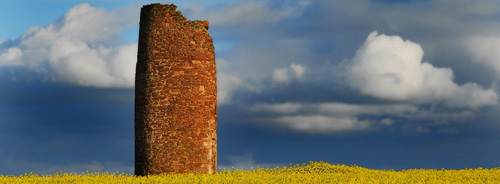Countryside
North Berwick Law
Some hills have a presence and character out of all proportion to their physical size, and North Berwick Law is certainly one of them. Standing to a height of 613ft (187m) immediately to the south of the town, North Berwick Law can be seen from across a very wide area including much of the eastern half of the Lothians and Edinburgh, Fife to the north, and the northern edge of the Southern Uplands to the south.
300 million years ago, this part of Scotland was home to a number of active volcanoes, and North Berwick Law is all that is left of the plug of lava that once welled up within one of them. Everything else has been eroded away by glaciation, leaving just the cone of harder material that was once deep underground.
Getting to North Berwick Law is easy with a good parking area signposted from the B1347. A track leading around the south side of the Law gives access to a path which leads you upwards. The main path carries on around the rear (south side) of the Law as it climbs, and though in a number of places you seem to be given options for “short cuts” taking steeper routes more directly upwards, the best path takes a line of least resistance, doubling back on itself several times as it climbs.
Traprain Law
Traprain Law, one of two large hills which dominate the lower plains of East Lothian, was the capital of the Votadini (the region’s dominant indigenous Iron Age tribe) and is regarded as one of the most important hill forts in Scotland.
The site was first fortified in the late Bronze Age (circa. 1500 BC) and occupation continued at Traprain through the Iron Age and Roman period until Medieval times. A famous treasure of late Roman silver was found here in the last century but other finds have included polished stone axes; a cache of bronze socketed axes; prehistoric, Roman and medieval pottery plus areas of rock art.
A 45-60 minute moderate walk takes you through the Fort’s ramparts and up onto the large plateau summit where there are fantastic views across East Lothian to the coast.
Lammermuir Hills
A significant range of hills which form the southern boundary of East Lothian. The highest point is Meikle Says Law at 1755fc (525m). These rolling hills rise from the plains of East Lothian and run down into the Scottish Borders, representing a change in geology along the Southern Upland Fault. They link with the Moorfoot Hills in the west and run to the coast between St. Abbs Head and Cockburnspath.

